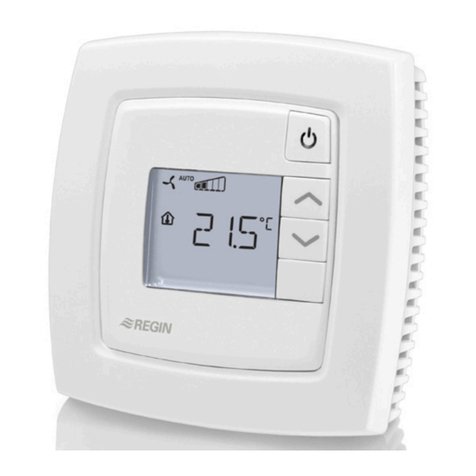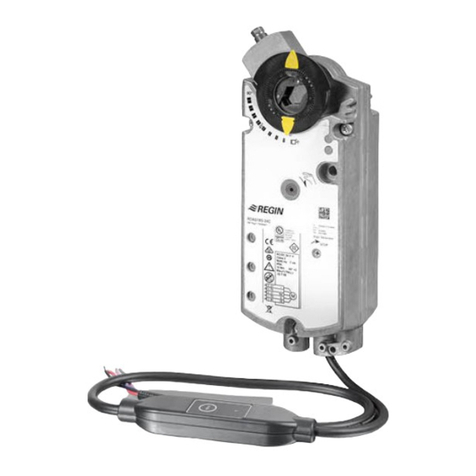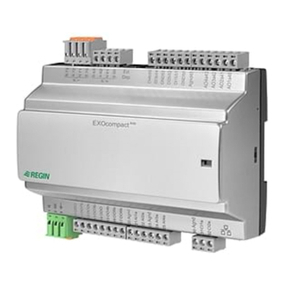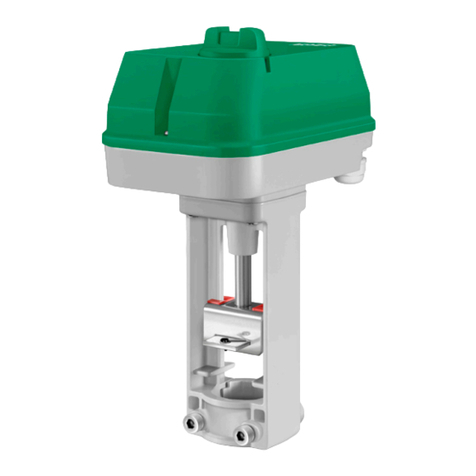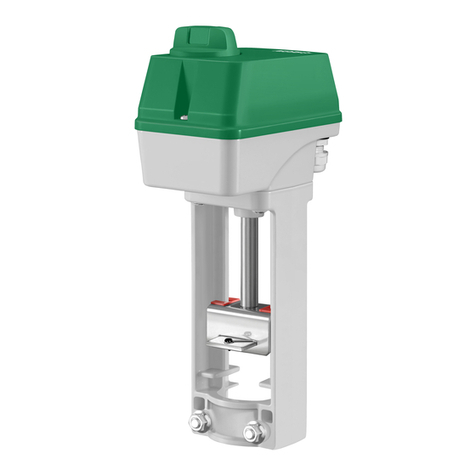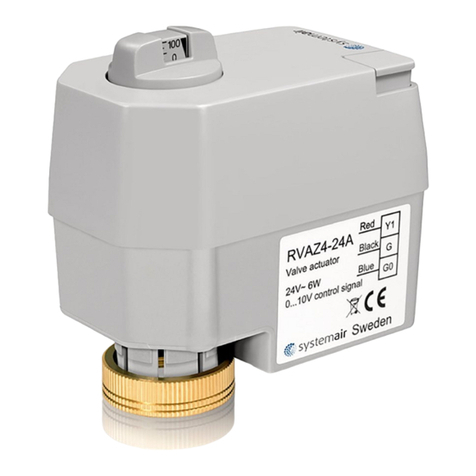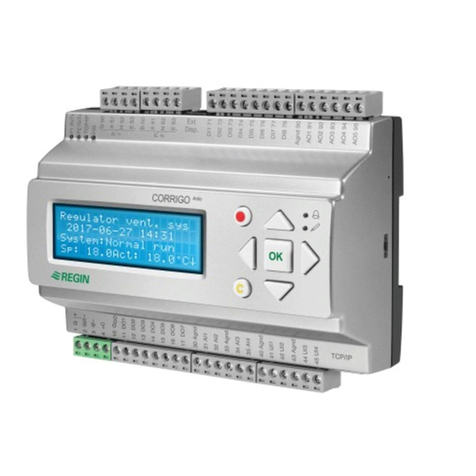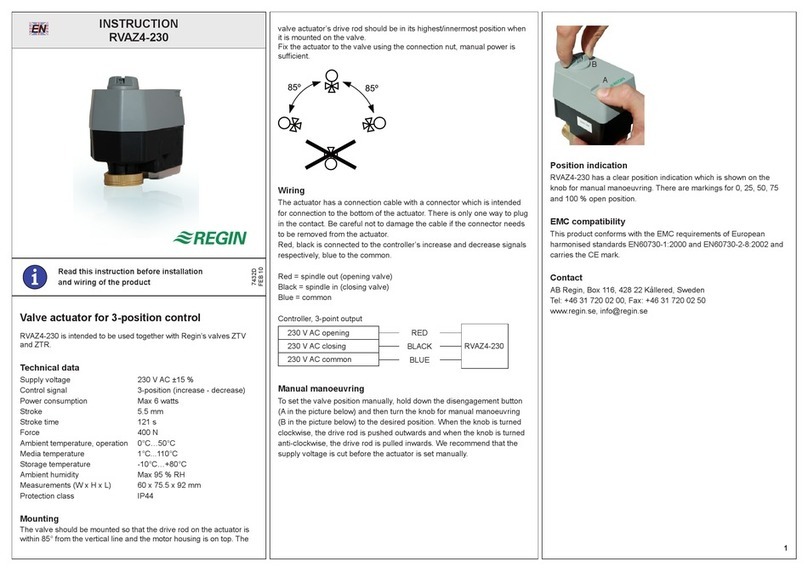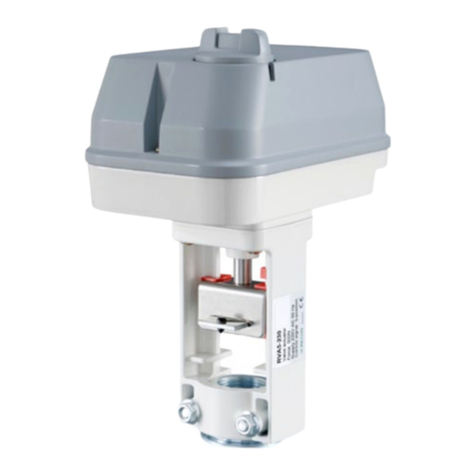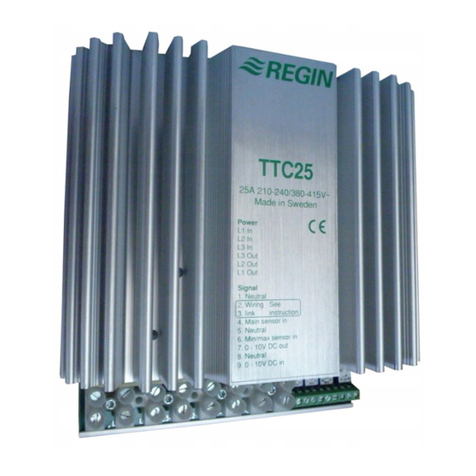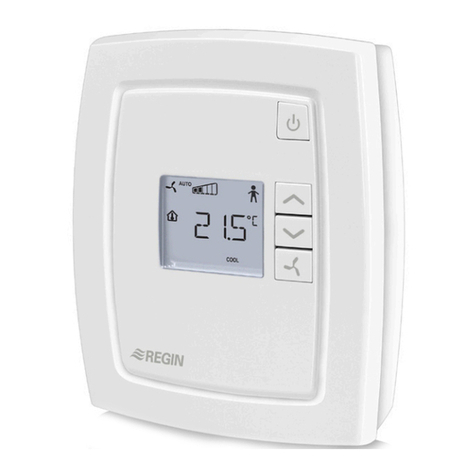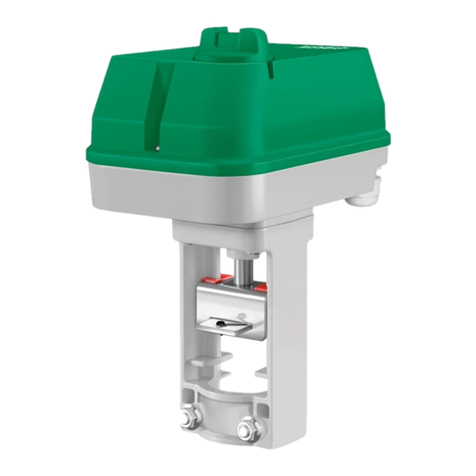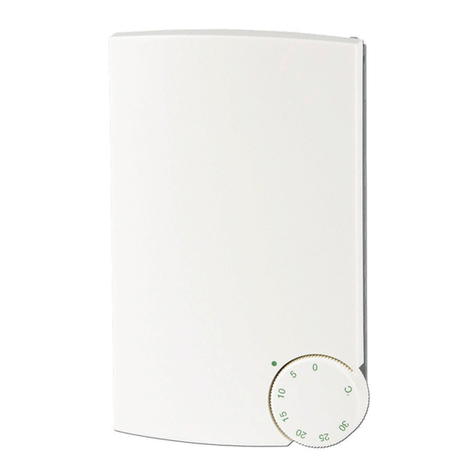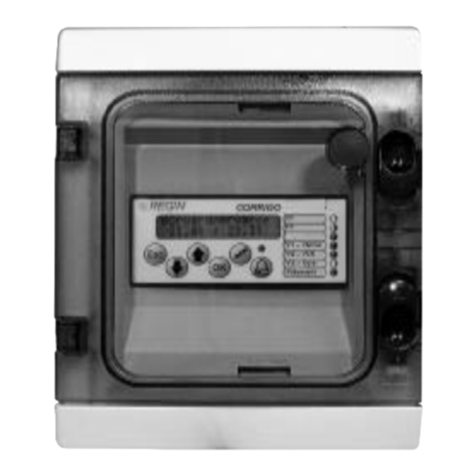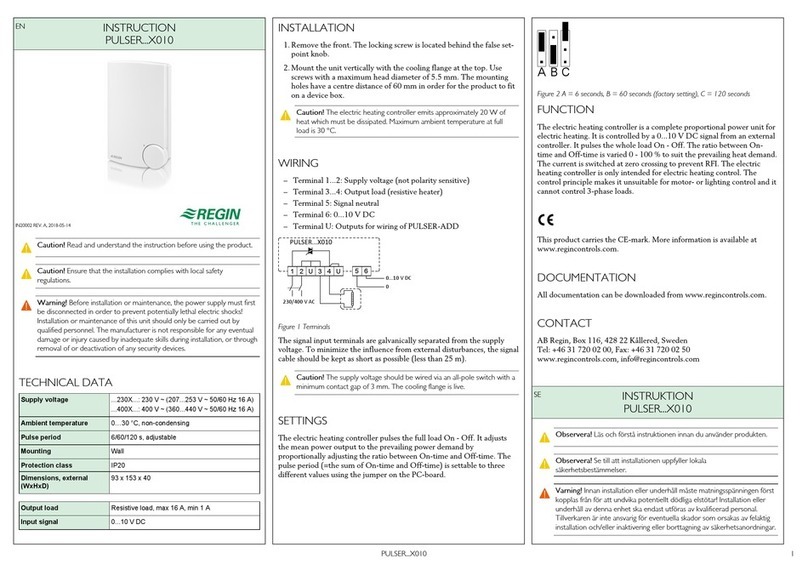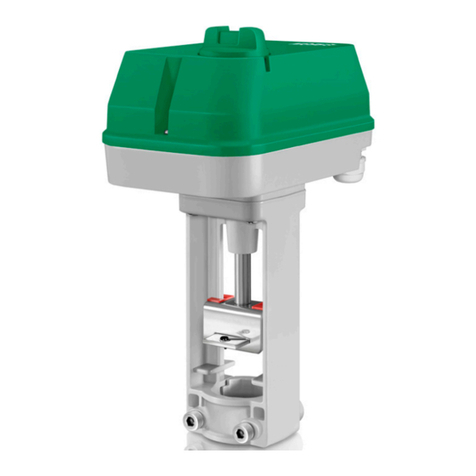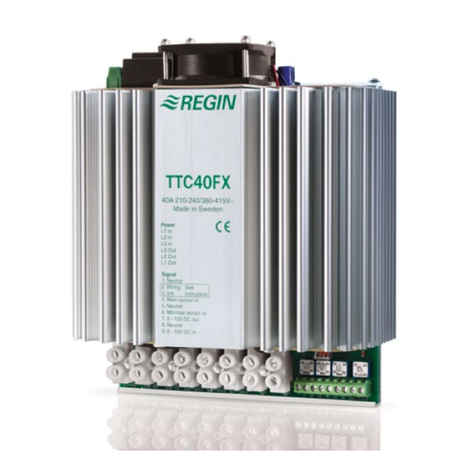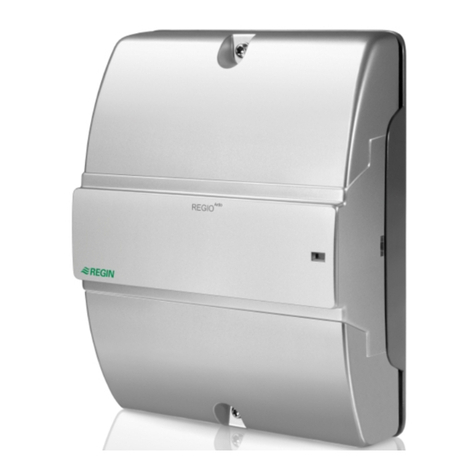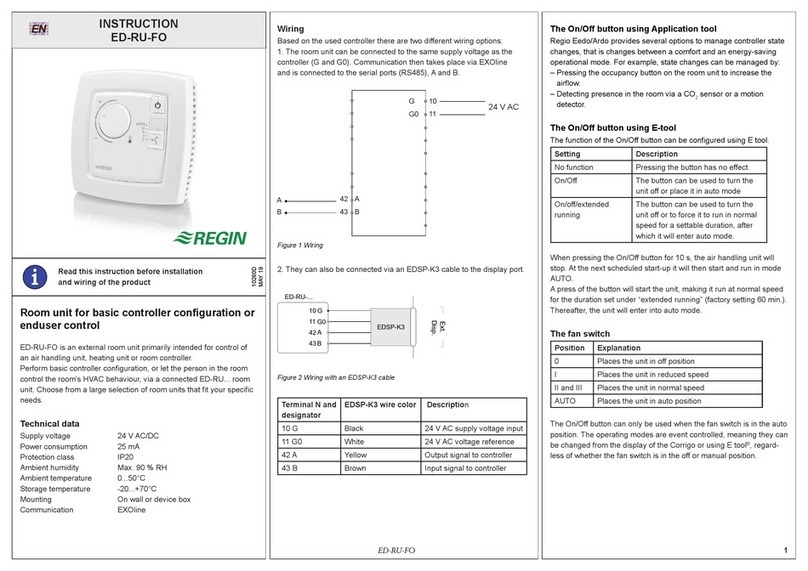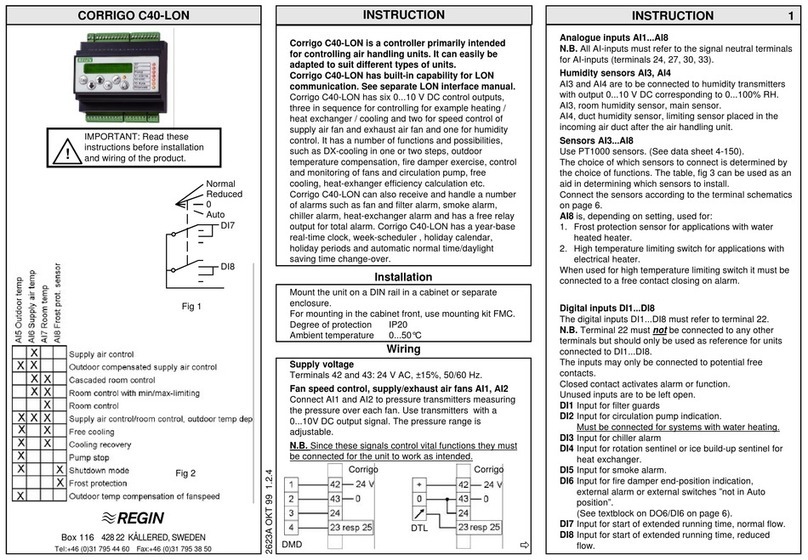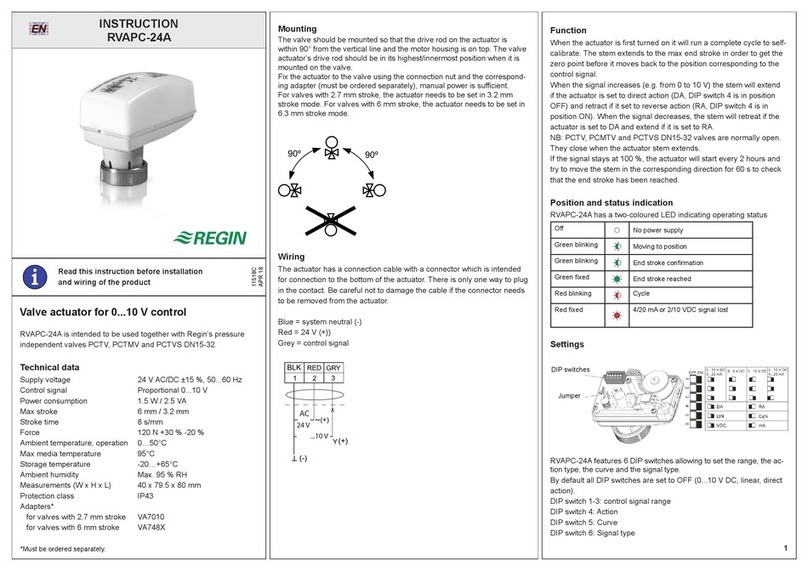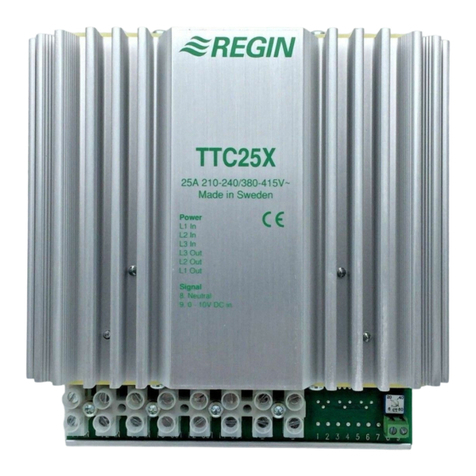
2418C JAN 00 1.5.5
CORRIGO C10-LON
DI7 Eingang für verlängerter Betrieb bei Betrieb mit
Ventilatoren mit einer Geschwindigkeit bzw. verlängerter
Betrieb mit hoher Geschwindigkeit beim Betrieb mit
Ventilatoren mit zwei Geschwindigkeiten.
DI8 Eingang für Start vom verlängerten Betrieb, niedrige
Geschwindigkeit beim Betrieb mit Ventilator mit zwei
Geschwindigkeiten.
DI7 und DI8 werden, in Abhängigkeit von der
Einstellung, entweder an momentan schließenden
Druckknopf oder z.B. an einem Timer, angeschlossen.
Falls DI7 und DI8 gleichzeitig geschlossen werden, wird
Corrigo das Gerät abschalten.
Bei der Montage mit externen Handschaltern für die
Steuerung der Betriebsarten, gemäß Bild 1 und 2
anschließen.
ANWEISUNG ANWEISUNG 2
Ausgänge
Analoge 0...10V DC Steuerausgänge AO1,AO2,AO3
Ausgangssignal 0...10V DC, 5 mA. Kurzschlusssicher.
AO1 Steuerausgang Y1
AO2 Steuerausgang Y2
AO3 Steuerausgang Y3
Diese Ausgänge sollen zur Klemme 41, Meßnull
referieren.
Da die Meßnull von Stellantrieben an Klemme 41
angeschlossen werden, auch wenn der Stellantrieb und
Corrigo an dem gleichen Transformator angeschlossen
sind.
Die Funktion der Ausgänge ist abhängig von der
Konfiguration, aber die Sekvenzfolge ist immer Y3-Y2-
Y1 bei steigendem Wärmebedarf.
Weitere Steuerausgänge DO1... DO7
Die digitalen Ausgänge DO1...DO6 sind Triac-gesteuert,
0,5 A, 24 V AC. Kurzzeitige Belastung 1 A.
Die Ausgänge werden Paarweise mit 24 V AC (siehe
Klemmenliste) gespeist.
Für höhere Spannungen und Ströme, Relaismodul
RM6-24/D oder RM6H-24/D, die für diesen Einsatz
angepaßt sind, einsetzen. Manche Ausgänge erhalten
alternative Funktionen in Abhängigkeit von der Applika-
tion. Dies bedeutet z.B., daß eine Kältemaschine nicht
mit einer Steuerung eines Gebläses mit zwei
Geschwindigkeiten kombiniert werden kann.
DO1 Steuert Zuluftsventilator oder hohe
Geschwindigkeit für Zuluftventilatoren mit zwei
Geschwindigkeiten
DO2 Steuert Fortluftsventilator oder hohe
Geschwindigkeit für Fortluftventilatoren mit zwei
Geschwindigkeiten
DO3 Steuert Umwälzpumpe falls vorhanden.
DO4 steuert Kältemaschine 1 falls vorhanden oder
Zuluftsventilator niedrige Geschwindigkeit bei zwei
Geschwindigkeiten.
DO5 Steuert Kältemaschine 2 falls vorhanden oder
Fortluftsventilator niedrige Geschwindigkeit bei
zwei Geschwindigkeiten.
DO6 Steuert externe Frostschutzverriegelung oder
Feuerklappenrutine (siehe Kästchen DO6/DI6)
DO7 Potentialfreier Relaisschalter der für die
Sammelstörmeldung genutzt wird, 1 A, 24 V AC/
DC. Schließt bei Alarm
Steuertasten und Fenster
Sprachauswahl
Corrigo ermöglicht das Anzeigen von Text im Fenster in
verschiedene Sprachen. Die Wahl der Sprache wird
durch drücken auf der Taste !während Corrigo an die
Spannung angeschlossen wird, ermöglicht. Um die
Sprache zu ändern, nochmals auf die Taste !drücken.
Ein Anzeige wird neben der aktuellen Sprache
angezeigt. Zum Ändern éoder êdrücken. Wenn die
gewünschte Sprache gewählt ist, OK drücken.
Nochmals OK drücken um wieder in das normale
System zu gelangen. Jede Information die im Fenster
angezeigt werden kann ist in Abschnitten in einen
Eingabe/anzeigebaum organisiert. Mit Hilfe der Tasten
an der Gerätefront kann man verschiedene Abschnitte
im Eingabe/anzeigebaum wählen, Parameter
überprüfen, Einstellungen ändern, Alarme ablesen und
quittieren.
Verschiedene Loginebenen führen zu verschiedenen
Zugang und Befugnissen.
Der Stamm des Eingabe/anzeigebaumes besteht aus
den folgenden Abschnitten:
Einloggen
Konfigurierung wird nur in Ebene 3 angezeigt
Regelung Temp. Anfangskästchen im Eingabe/
anzeigebaum
Betriebsart
AI Analoge Eingänge
DI Digitale Eingänge
AO Analoge Ausgänge
DO Digitale Ausgänge
Kalender
Alarmeinstellungen wird in Ebene 0 nicht angezeigt
Einstellungen wird nur in Ebene 2 und 3
angezeigt
Unter normalem Betrieb, wenn die Tasten nicht betätigt
werden, wird eine wiederholende Serie von Informatio-
nen angezeigt. Die Anzeige wechselt zwischen
Startkästchen mit Produktbezeichnung und Uhr,
Sollwert/Istwert für die Temperaturregelung und dem
Regelstatus für die Ausgänge Y1, Y2 und Y3.
Um zum Eingabe/anzeigebaum zu kommen, OK
drücken, wobei Corrigo zum Abschnitt Regelung Temp.
wechselt.
Mit éund êbewegt man sich aufwärts oder abwärts
entlang dem Stamm. Die Pfeile Rechts im Fenster
zeigen an ob es Abschnitte über oder unter dem
aktuellen gibt.
Um auf eine Verzweigung zu kommen, OK drücken. Auf
der Verzweigung kann man sich in der gleichen Weise
mit dem Pfeilen bewegen. Mit Esc bewegt man sich
zurück zum Stamm.
In den Abschnitten mit variablen Parametern wechselt
man zu „Ändern“ durch drücken auf !.
Eine blinkende Anzeige ist im ersten variablen Feld zu
sehen. Mit den Pfeiltasten kann der Wert geändert
werden. Wenn ein richtiger Wert eingestellt ist, wird dies
mit OK bestätigt, wobei die Anzeige in das nächste Feld
springt.
Nach OK im letzten Feld wird der geänderte Wert
gespeichert und das System verläßt „Ändern“.
Um eine Änderung ohne Maßnahme zu verlassen, Esc
drücken, wobei die Anzeige ein Feld zurück springt.
„Ändern“ wird nach einigen Minuten Inaktivität automat-
isch abgebrochen.
%Öffnet Alarmliste. Anzeige von aktiven und nicht
quittierten Alarmen im Fenster. Die Leuchtdiode für
Sammelstörmeldung, oberhalb der Taste, leuchtet wenn
Alarme in der Liste vorhanden sind. Sind mehrere
Alarme vorhanden, werden éund êfür das Blättern
zwischen diesen, verwendet. Ein Alarm wird mit OK
quittiert. Um ohne Maßnahme abzubrechen, Esc
drücken.
*CORRIGO C10* Sollwert/Istwert Y1 / Y2 / Y3
Mo 980907 10:10 20.0ºC / 20.0ºC 0% / 45% / 0%
>Regelung Temp á
AI Analog eing. â
REGELFUNKT. á
>0 Zuluftsregl â
